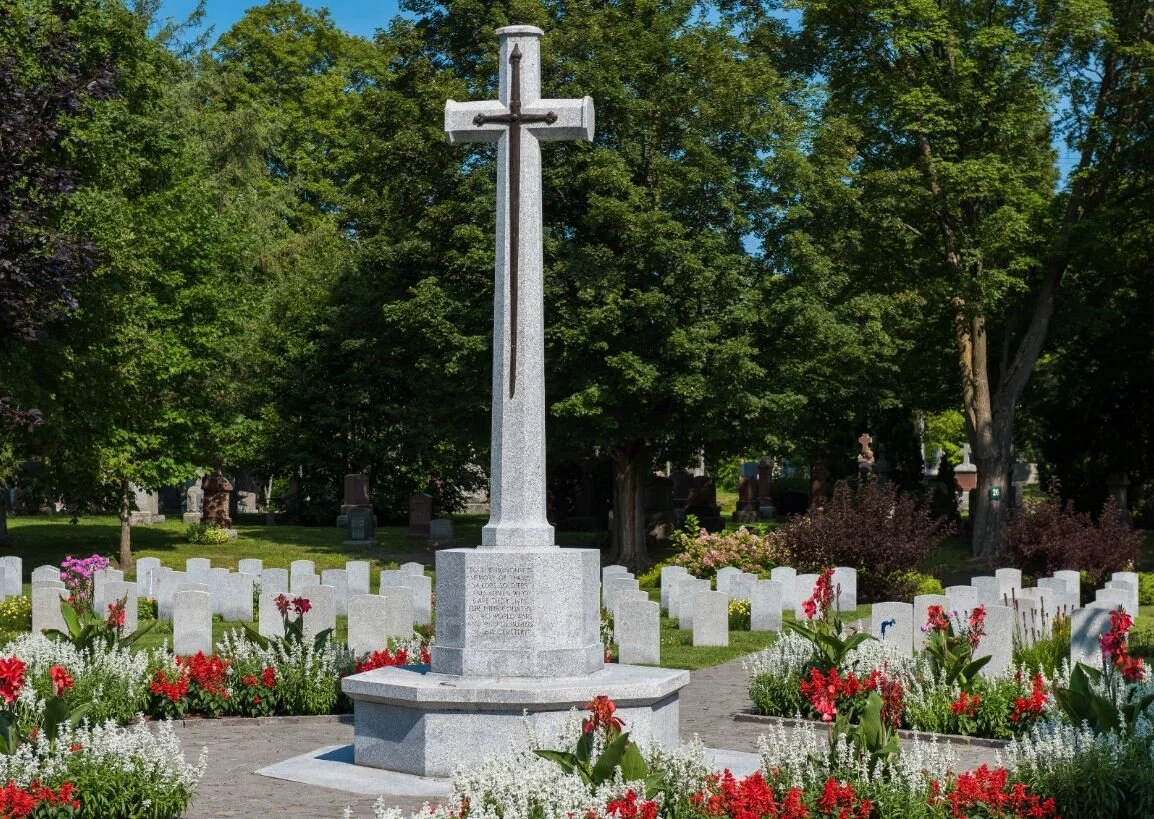Come Visit the Cemetery - a Basic Etiquette
/This post is a collaboration between No Stone Left Alone and Beechwood Cemetery in Ottawa, ON.
Cemeteries are often referred to as a place for the living. In urban environment, cemeteries are often some of the last remaining green space open to the publics. In a given day, cemeteries will host funeral or burial services, monuments visited by grieving families, people walking around the grounds and artists taking photographs or painting.
Most cemeteries encourage the community to explore the grounds. Given the dynamic use of cemeteries grounds, it is helpful to know the basic etiquette of visiting cemeteries.
There are really three types of cemeteries in Canada; public, private and not-for-profit. Most cemeteries can be visited any time when they are open (usually dawn until dusk). However private or not-for-profit cemeteries are often on private property and may not be available for public visitation at all times - so it’s important to check before visiting. Most cemeteries post their rules on their websites or on plaques near the entrances, along with visiting hours.
These guidelines or rules, called by-laws, can reference things ranging from operational hours to the allowed items on graves. These rules can change so be sure to check back for any updates. If the local cemetery doesn’t offer much information on their website or if they don’t have one, call them and ask about visiting hours, rules and regulations.
During your visit, there are some very important things to keep in mind.
Be respectful of other mourners.
If a funeral or burial is occurring, take care not to get in the way of procession and burial. Respect their privacy, give them their space, and don’t stare. Make sure your cell phone ringer is turned down and speak in a low voice if you must talk.
Drive with care.
Be sure to follow the roadways and remain off the grass. Drive slowly and watch out for people who might not be paying attention. If the lane is narrow and another car approaches, offer to move your car until the other driver can get through. Although roads may become congested during events, remain calm and courteous, and share them with others respectfully.
Respect the graves.
Touching monuments or headstones is seen as very disrespectful and in some cases, may cause damage. For example, some older memorials might be in disrepair and could fall apart under the slightest touch. Be sure to walk in between the headstones, and don’t stand on top of a burial place.
Share the cemetery etiquette rules with your party.
If you’re visiting the cemetery with friends and family, make it a point to mention etiquette and cemetery rules to them. For some, it may their first time visiting a cemetery, so sharing your knowledge can make the visit more comfortable for everyone involved. If you’re visiting the cemetery with children, take some time to discuss where you’re going and what they can expect when they get there. Keep a close eye on young children and keep them from running, shouting, and playing on graves and monuments.
Clean up after yourself.
If you unwrapped an arrangement you brought with you or have other debris, be sure to clean it up before you leave. Most cemeteries have trashcans easily accessible, so do your part to keep your loved one’s final resting place in pristine condition.
Always remember, treat the graves as you would like your own to be treated.
With a little planning, and due care and respect, a visit to your local cemetery can be a wonderful way to explore your community’s history - and to pay your respects to those who had a part in it.
Beechwood Cemetery is a National Historic Site, named the National Cemetery of Canada, National Military Cemetery, RCMP National Memorial Cemetery, CSIS National Memorial Cemetery and has served the community for nearly 150 years.
No Stone Left Alone Memorial Foundation is dedicated to honouring and remembering Canada’s veterans. Our unique ceremony provides students and youth with an authentic experience that creates knowledge, understanding and appreciation of those who serve and of the sacrifice of Canada’s fallen.




